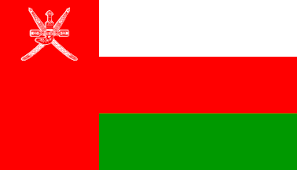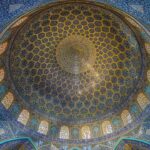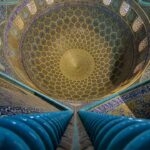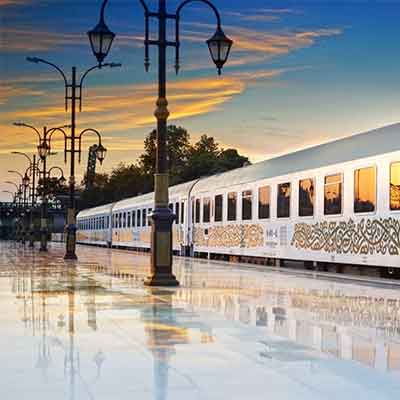
- Home
- Locations
- attractions
- Sheikh Lotfollah Mosque
Sheikh Lotfollah Mosque
description
Sheikh Lotfollah Mosque, the Only Mosque without Minaret in Iran
Sheikh Lotfollah Mosque, one of the most-visited monuments of Naqsh-e Jahan Square, has a stunning architecture, especially in tiling. It lies beside the other attractions of Naqsh-e Jahan Square such as Abbasi Jameh Mosque, Ali Qapu Palace and Grand Bazaar of Isfahan.
Sheikh Lotfollah Mosque is the only mosque in Iran which has no minarets. All the decorations of this Safavid-era masterpiece have been created by artists of Isfahan. In addition, all the calligraphies recorded on the inscription, have been written by Alireza Abbasi, a prominent Iranian artist.

Sheikh Lotfollah Mosque, Worship Place of the Royal Family
The construction operation of Sheikh Lotfollah Mosque was started in 1602 by the order of Shah Abbas I. Finally, it was completed in 1619, after 17 years. Unlike the other mosques, Sheikh Lotfollah Mosque was not a public place. The only people who were allowed to enter the mosque were the royal family and scholars. Some historical evidences reveal that Shah Abbas the Great said his prayers in this mosque from the date it was constructed to the end of his life.
Why was This Place Named Sheikh Lotfollah Mosque?
Sheikh Lotfollah was one of the great Shia leaders in the Safavid era, who lived in the area lying in now-a-day Lebanon. Shah Abbas the Great invited him to settle in Iran and teach theology; he also provisioned this mosque for him. Sheikh Lotfollah was in charge for leading Friday prayer in this mosque. Finally, he became ill in 1626 and passed away.

Sheikh Lotfollah Mosque, the Architectural Masterpiece of Iranian Artists
Some of the globally-renowned architects remember Sheikh Lotfollah Mosque as an architectural masterpiece. For example, Louis I Kahn, one of the known architectures in the world, visited this place. In the description of this mosque, he said: “I can only imagine this architectural masterpiece in a dream with a piece of gold and silver.”
Professor Arthur Upham Pope, the expert and historian of artworks, also describes this mosque so beautifully in his book, “the Survey of Persian Art”. He says: “it is hard to imagine this mosque is human-made. There is not even a small weakness in this building. All the sizes fit and the patterns are so beautiful. In brief, the magnificence of this structure has no source but faith and heavenly inspiration.”
Although minarets and courtyards are the main elements of Islamic architecture, they have no place in this mosque. That is what distinguishes Sheikh Lotfollah Mosque from the other mosques. Entering the mosque, you should climb the stairways; unlike the other mosques that you pass praying hall on entrance. Apart from magnificence, this construction has been designed in the direction of Qibla.
The Distinctive Dome of Sheikh Lotfollah Mosque
The color of this mosque’s dome distinguishes it from the other domes of Isfahan that are turquoise. This dome appears pink in the morning, under the sun. In the noon, it looks creamy; and in the afternoon, it turns beige.
The exterior of the mosque has been decorated with faience tiles. You can also view blue inscriptions featuring some verses of Quran in the lower structure. The dome is covered with Islamic arabesque patterns. In addition, you can find an octagon star at the highest point of the dome.

The Mihrab of Sheikh Lotfollah Mosque, the Confluence of Light and Color
One of the most spectacular parts of this mosque is its mihrab (alter), considered as a tiling masterpiece. It has been decorated with arabesque and flower patterns. In addition, a skylight devised on top of the praying hall results in light and color confluence.

The Underground Aisles of Sheikh Lofollah Mosque
One of the other architectural wonders of this mosque is an underground aisle that connects Ali Qapu Palace to the mosque. According to historical evidences, the courtiers reached the mosque through this aisle. However, the project of constructing a big pool at the center of Naqsh-e Jahan Square caused this aisle to be divided into two parts.
The Magnificent Manifestation of Interior Decorations in the Passage of Light
Lightning is an important architectural element of this mosque, which embellishes the interior ambience. It also creates a spiritual space in the mosque. This mechanism proves that Iranian architects had full knowledge of lightning and its sophistications.
The lighting system of this mosque is totally different from the other mosques. There are two vaulted openings beneath the dome, none of whose holes are opposite to each other. This feature causes light refraction, as a result of which the glary of light is reduced. The light refraction also fits the architecture of the mosque and its arabesque-patterned tiles.

The Tileworks of Sheikh Lotfollah Mosque
All the interior and exterior walls of this mosque have been decorated with faience tiles. They also benefit delicate patterns that impress the visitors. The colors and light reflection employed on the walls double the beauty of this mosque.
Sheikh Lotfollah Mosque; a Journey to Lights, Patterns and Colors
On your trip to Iran make sure to visit this Safavid-era architectural masterpiece. It is also the best choice for the interested ones to Persian tiling.
1001 Nights Tours has provisioned a variety of tours for visiting this monument. Click here to know more about these tours. If you are interested to study about the other monuments of Isfahan, click here. We always welcome your suggestions, don’t hesitate to share them with us via email.















